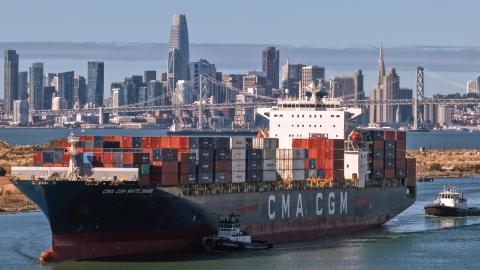Projecting a persuasive image of a desirable and practical future is extremely important to high morale, to dynamism, to consensus, and in general to help the wheels of society turn smoothly. But we also want to emphasize that we at Hudson are only interested in improving morale after we are ourselves convinced of the truth of our message. To us, the virtue of the image of the future presented here is not that it may prove useful (though we are highly pleased that this may be so), but rather that our forecast of the future may prove accurate, or at least about the most plausible image one can develop now. If we could not realistically justify an optimistic image, we would be quite willing to portray a negative one, arguing that it is our business to call the shots as we see them. Furthermore, such a negative image, if persuasive and realistic, might help elites to mobilize to face real problems (as opposed to unrealistic negative images, which tend to raise false issues, create unnecessary controversy, and divert resources and attention from practical solutions). Actually, we believe that it is almost always easier, except in the direst emergencies, to mobilize society around a positive rather than a negative image. It is also our view that if the negative image is largely inaccurate and morale-eroding as well, it could be destructive if widely disseminated. This might be especially true if it dominates the educational curriculumas indeed the limits-to-growth view has in a surprisingly large portion of the Atlantic Protestant culture and Japan.
It is also worth noting that it is not true, as many people contend, that what might be called the "max-min strategy" would require taking a limits-to-growth perspective. In such a strategy one examines the worst that can reasonably be expected to happen with each policy and then picks the policy that limits one's risksthat is, of all the policies available, the one with the least damaging of the possible outcomes. We would argue that, in reality, almost the opposite may be true. It is not our postindustrial perspective which would force enormous repression on individual countries and which would consciously continue, in a dangerous way, absolute world poverty. Indeed, it is the limits-to-growth position which creates low morale, destroys assurance, undermines the legitimacy of governments everywhere, erodes personal and group commitment to constructive activities, and encourages obstructiveness to reasonable policies and hopes. Thus the effects of this position increase enormously the costs of creating the resources needed for expansion, make more likely misleading debate and misformulation of the issues, and make less likely constructive and creative lives. Ultimately the position even increases the potential for the kinds of disasters which most of its advocates are trying to avoid.
Clearly, the first task is to gain acceptance of a more reasonable view of the future, one that opens possibilities rather than forecloses them. We believe that current prophets of peril are making forecasts that could indeed be self-fulfilling, if only in the short run. For if enough people were really convinced that growth should be halted, and if they acted on that conviction, then billions of others might be deprived of any realistic hope of gaining the opportunities now enjoyed by the more fortunate. Indeed, lacking the incentives that have guided them and their forebears, they too might soon despair, bereft of both ambition and goals, and irresponsible activist leaders might assume power. We believe that eventually--when the post-industrial economy has arrived--much of the industrial imperative and its appurtenances will erode or expire; but to weaken it prematurely, before it has run its natural course, would be to impose unnecessary trauma and suffering and make even more difficult the full exploitation of the many opportunities now available.












